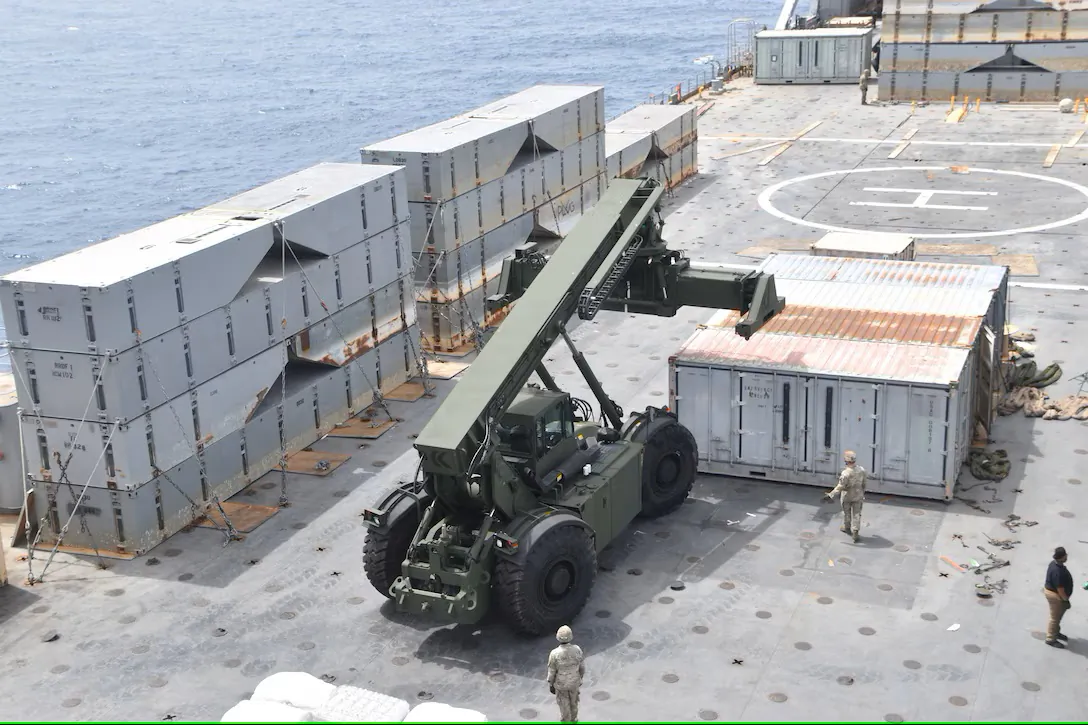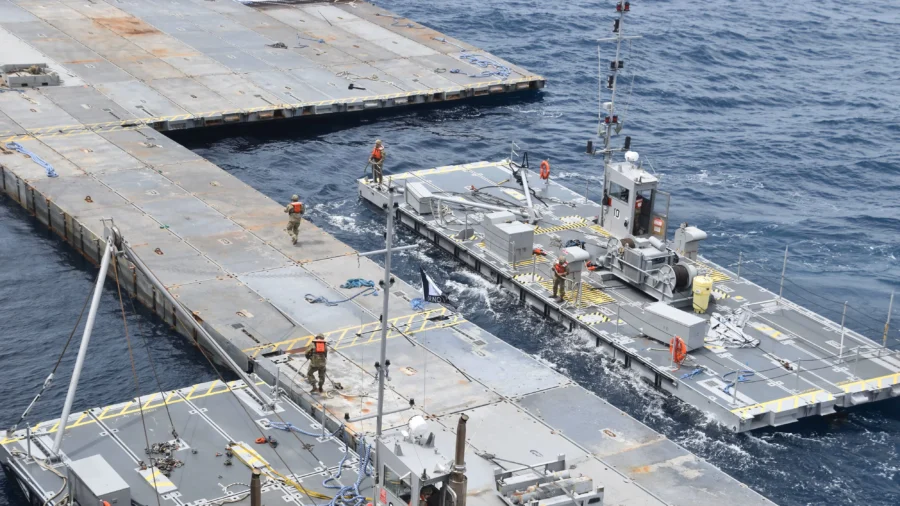Bad weather conditions are preventing the anchoring of a U.S. military floating pier system that will facilitate the delivery of humanitarian aid to a starving Gazan population, the Pentagon said on Tuesday.
The U.S. military has completed the construction of the Joint Logistics Over-the-Shore system (JLOTS) on the Mediterranean Sea, Deputy Pentagon Press Secretary Sabrina Singh said. The operation is part of an international effort to create a maritime corridor to supply aid to the Gaza strip via Cyprus.
“The U.S. military has completed the offshore construction of the Trident pier section, or ‘the causeway,’ which is the component that will eventually be anchored to the Gaza shore,” Ms. Singh said. “So as of today, the construction of the two portions of the JLOTS—the floating pier and the Trident pier—are complete and awaiting final movement offshore.”

However, current weather conditions do not allow moving the floating piers in place.
“Today, there are still forecasted high winds and high sea swells, which are causing unsafe conditions for the JLOTS components to be moved,” Ms. Singh said.
Last week, assembly of the piers had to be paused due to adverse sea conditions, and they were moved near the Port of Ashdod—about 18 miles north of Gaza.
In the meantime, a U.S.-flagged cargo ship, the MV Sagamore, is being loaded with humanitarian aid supplies in Cyprus, the Pentagon said.
The Sagamore will travel to the floating pier once it is in place—a few miles off the coast of Gaza. On the pier, the cargo will be unloaded onto trucks that are onboard Army-owned utility ships and logistic support vessels. When the ships arrive at the Trident pier, the trucks can drive off the ships directly into Gaza.

The Pentagon foresees an initial transit of about 90 truckloads of supplies per day to pass through the causeway. When the operation reaches full capacity, as many as 150 trucks will make their way into Gaza daily.
“We’re going to start with an additional small amount of aid trucks to flow in to make sure that the system works, that the distribution works, and then you’ll see that increase,” Ms. Singh said.
After more than six months of war, the aid won’t come a minute too soon—last week, a senior U.N. official said northern Gaza was experiencing “full-blown famine.” In March, the United Nations estimated the number of people experiencing “catastrophic levels of hunger” had already risen to 79 percent and is expected to rise to over 90 percent by July.
Though the JLOTS will provide substantial relief to the war-torn area, it will not suffice to feed a population of 2.3 million people in distress. “The best way [is] through those land routes, and we do want to see those opened up,” Ms. Singh said.
Since March 2, U.S. Central Command, in coordination with the Royal Jordanian Air Force, has carried out nearly 40 humanitarian missions to airdrop nearly 1,200 tons of humanitarian assistance into Gaza, the Pentagon said.

